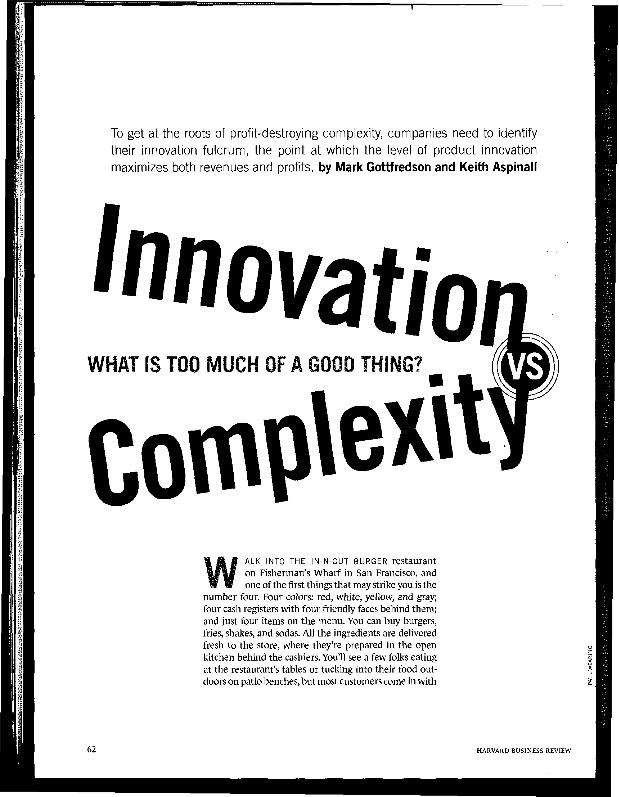Innovation vs. complexity : what is to much of a good thing?

Contenido multimedia no disponible por derechos de autor o por acceso restringido. Contacte con la institución para más información.
| Tag | 1 | 2 | Valor |
|---|---|---|---|
| LDR | 00000nab a2200000 i 4500 | ||
| 001 | MAP20071507420 | ||
| 003 | MAP | ||
| 005 | 20220912145303.0 | ||
| 007 | hzruuu---uuuu | ||
| 008 | 051214e20051101usa|||| | |00010|eng d | ||
| 040 | $aMAP$bspa | ||
| 084 | $a922.112 | ||
| 100 | 1 | $0MAPA20080193171$aGottfredson, Mark | |
| 245 | 1 | 0 | $aInnovation vs. complexity$b: what is to much of a good thing?$cMatt Gottfredson and Keith Aspinall |
| 520 | $aTo get at the roots of profit-destroying complexity, companies need to identify their innovation fulcrum, the point at which the level of product innovation maximizes both revenues and profits.Companies have strong incentives to be overly innovative in new-product development, because the continual launch of new products and the line extensions adds complexity throughout a company's operations | ||
| 650 | 1 | 1 | $0MAPA20080546991$aEmpresas |
| 650 | 1 | 1 | $0MAPA20080606787$aInnovación empresarial |
| 650 | 1 | 1 | $0MAPA20080615307$aSatisfacción del cliente |
| 650 | 1 | 1 | $0MAPA20080606091$aEstrategia empresarial |
| 650 | 1 | 1 | $0MAPA20080579784$aCostes económicos |
| 700 | 1 | $0MAPA20080122256$aAspinall, Keith | |
| 740 | 0 | $aHarvard business review | |
| 773 | 0 | $wMAP20077100345$tHarvard business review$dBoston$gNovember 2005 ; p. 62-71 |

